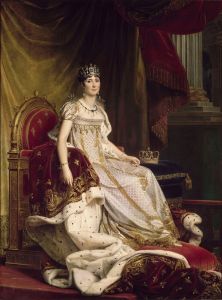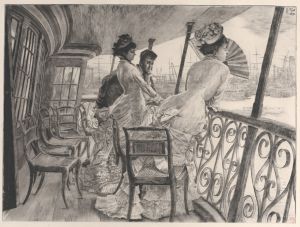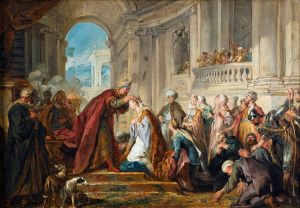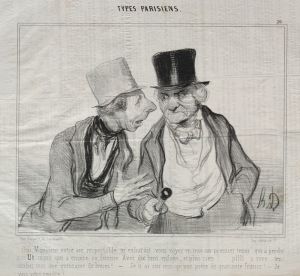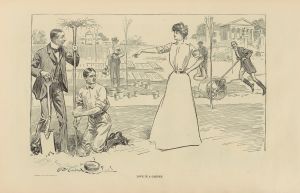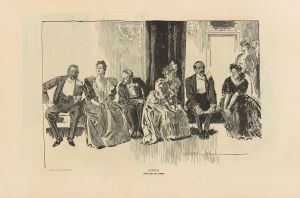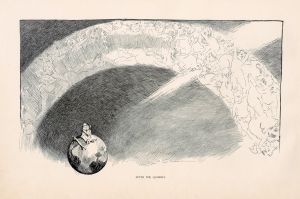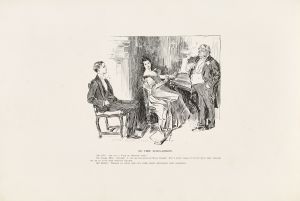
These young girls who marry oldish millionaires
A hand-painted replica of Charles Dana Gibson’s masterpiece These young girls who marry oldish millionaires, meticulously crafted by professional artists to capture the true essence of the original. Each piece is created with museum-quality canvas and rare mineral pigments, carefully painted by experienced artists with delicate brushstrokes and rich, layered colors to perfectly recreate the texture of the original artwork. Unlike machine-printed reproductions, this hand-painted version brings the painting to life, infused with the artist’s emotions and skill in every stroke. Whether for personal collection or home decoration, it instantly elevates the artistic atmosphere of any space.
Charles Dana Gibson was an influential American illustrator, best known for creating the iconic "Gibson Girl," a representation of the idealized American woman at the turn of the 20th century. His work captured the social dynamics and cultural nuances of his time, often with a touch of humor and satire. One of his notable illustrations is "These Young Girls Who Marry Oldish Millionaires," which reflects the societal observations and themes prevalent during the Gilded Age and the early 20th century.
The illustration "These Young Girls Who Marry Oldish Millionaires" is part of Gibson's broader commentary on the social mores and class structures of his era. It depicts a young woman, presumably a "Gibson Girl," alongside an older, wealthy man, highlighting the phenomenon of young women marrying older, affluent men. This theme was not uncommon in the societal landscape of the time, where marriages were often influenced by financial and social considerations rather than purely romantic ones.
Gibson's work often explored the complexities of relationships and the roles of women in society. The "Gibson Girl" became a cultural icon, representing a new standard of femininity that was independent, confident, and socially active. Through his illustrations, Gibson provided a lens into the changing dynamics of gender and class, capturing the aspirations and contradictions of the American upper class.
The illustration likely appeared in one of the popular magazines of the time, such as Life, Harper's Weekly, or Scribner's, where Gibson's work was frequently published. These publications were instrumental in disseminating his images to a wide audience, contributing to the widespread popularity of the "Gibson Girl" and the themes he explored.
Gibson's satirical approach often highlighted the absurdities and ironies of social conventions. In "These Young Girls Who Marry Oldish Millionaires," he may have been commenting on the transactional nature of some marriages, where wealth and social status were prioritized over love and compatibility. This theme resonated with audiences who were familiar with the societal pressures and expectations of the time.
Charles Dana Gibson's illustrations, including "These Young Girls Who Marry Oldish Millionaires," remain significant for their artistic merit and their insightful commentary on early 20th-century American society. His work continues to be studied and appreciated for its ability to capture the essence of an era, reflecting both the aspirations and the limitations of the people who lived in it. Through his keen observations and artistic skill, Gibson left a lasting legacy that continues to influence the portrayal of women and social themes in art and popular culture.





